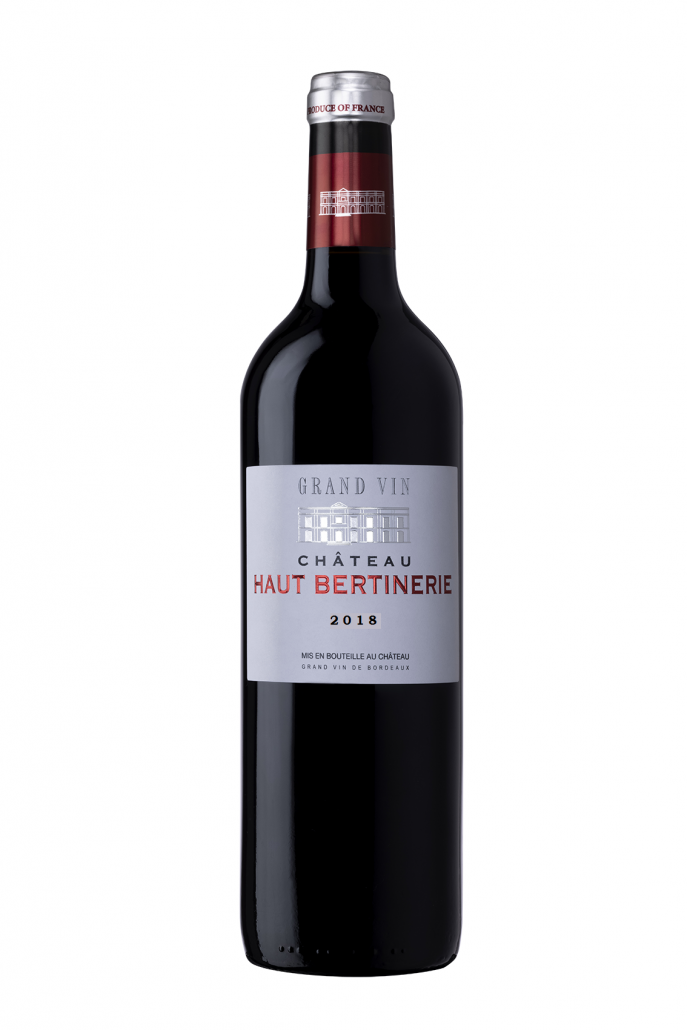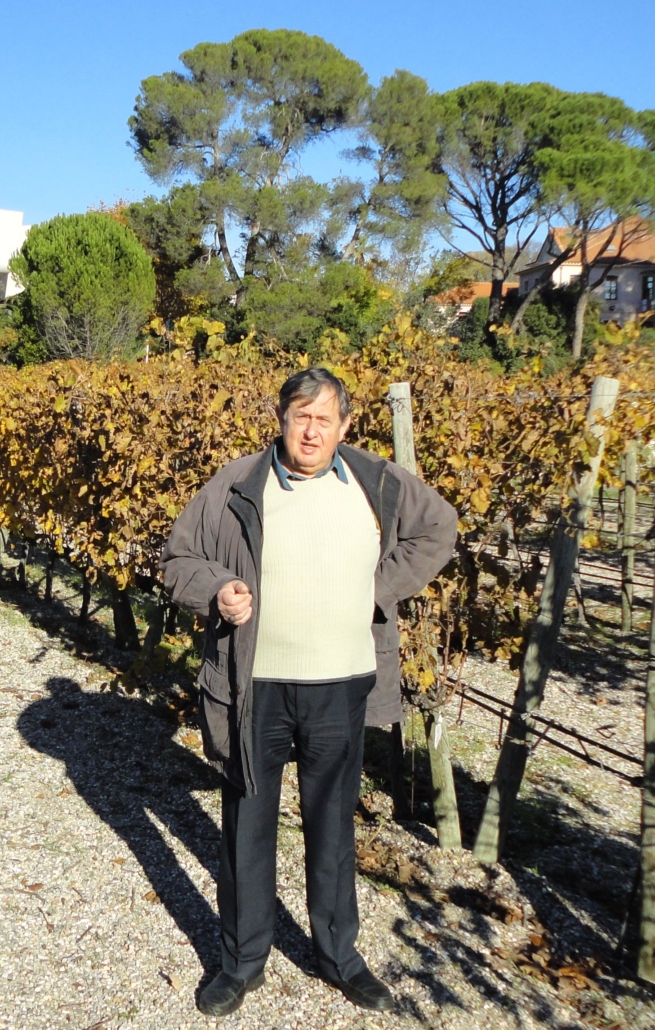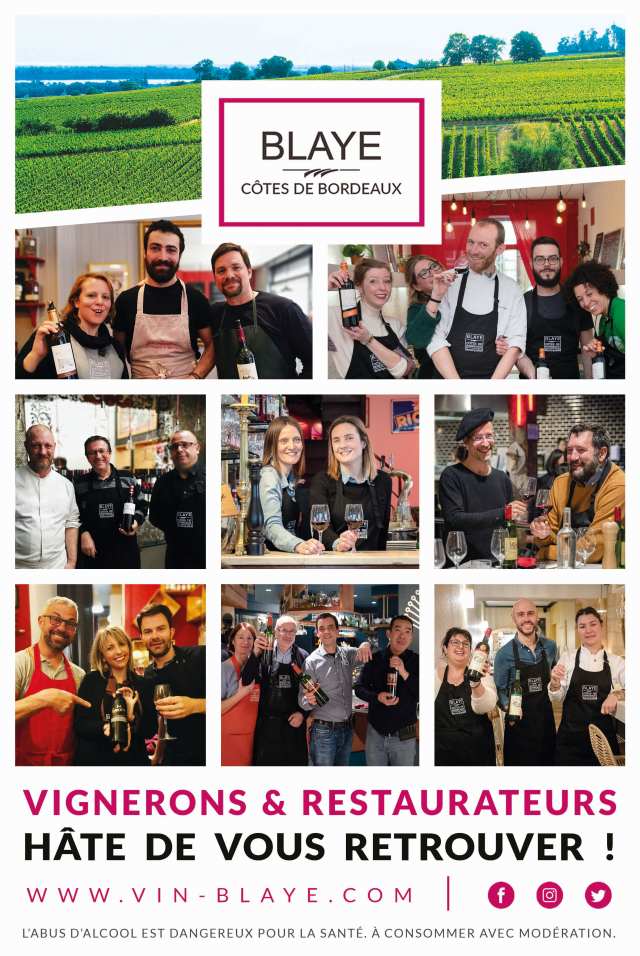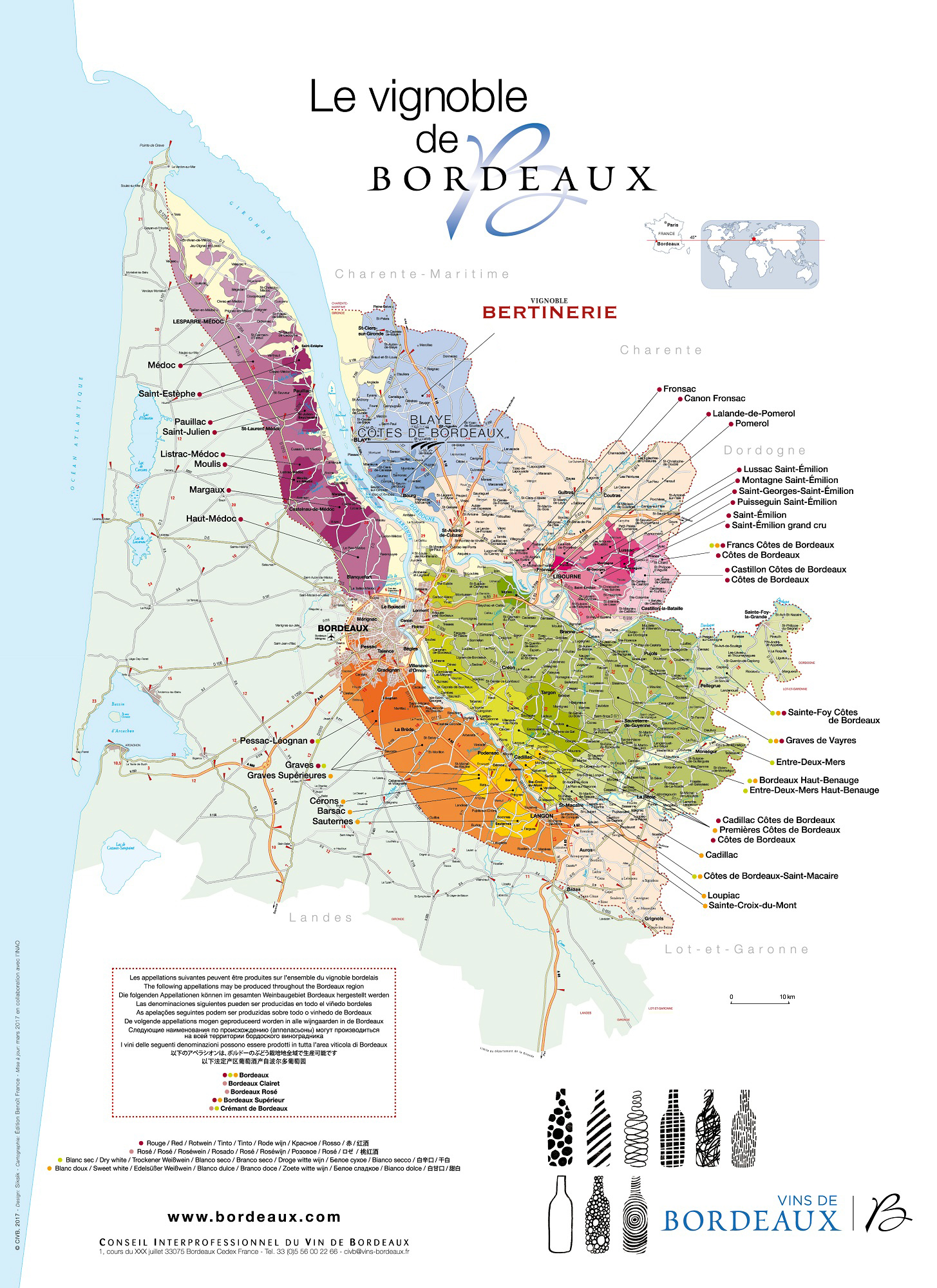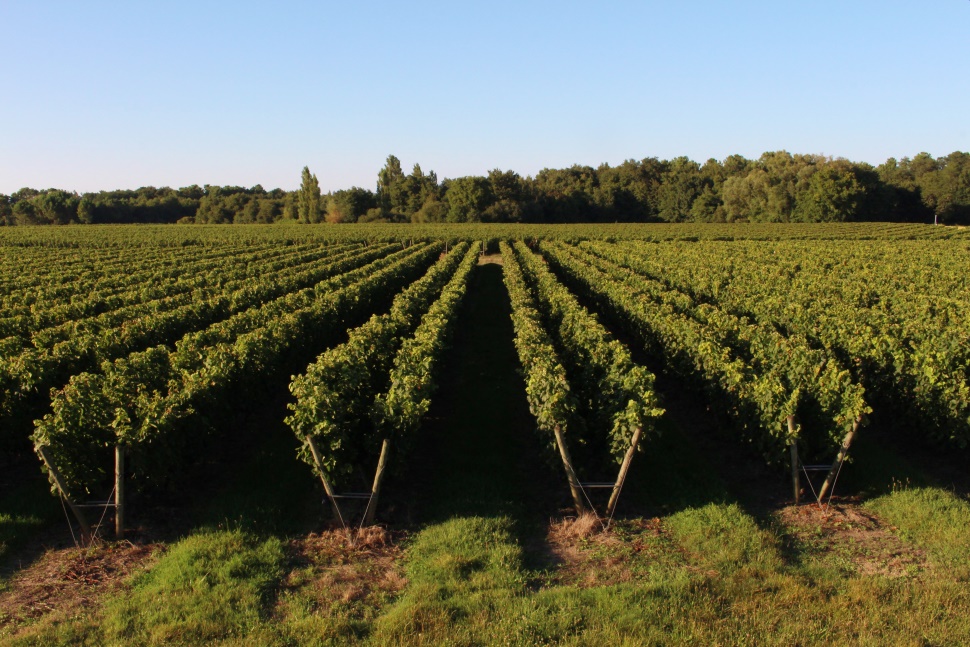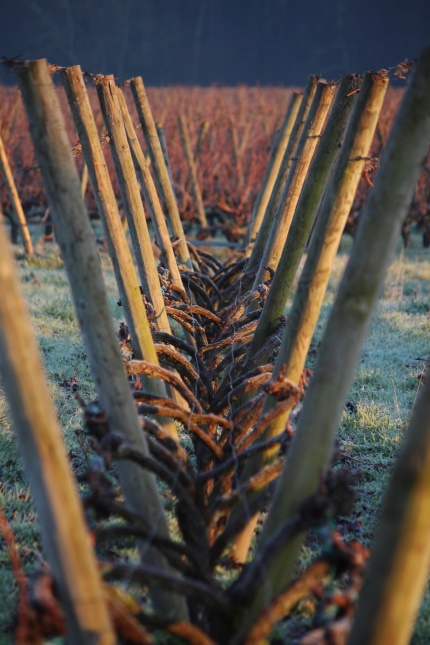OUR TERROIR
Terroirs types
The VIGNOBLE BERTINERIE is composed of around 50 plots of vineyards. But the majority is shared in 3 parts and kinds of soils :
- Clay and Lime slopes mixed on West side of the village of Cubnezais (Sauvignon blanc, Cabernet Franc and Merlot)
- Clay and Sand « Plateau » at Cubnezais (Sauvignon blanc et Cabernet Sauvignon)
- Clay and Limestone (St Emilion GCC type) between the villages of Cézac and Cavignac. (Sauvignon blanc, Malbec and Merlot)
Red grapes varieties
(see each wine’s data)
Despite that the Merlot dominate at 60% only, the other important grape is the Cabernet Sauvignon (30 à 40%), which is rare for the right bank.Some Cabernet Franc and Malbec are also added to these 2 main varieties..
White grapes varieties
(see each wine’s data)
Usually in Bordeaux, dry white wines are composed of Sauvignon, Sémillion and Muscadelle blended. The VIGNOBLE BERTINERIE has exceptional soils perfectly adapted to the Sauvignon blanc. Sauvignon blanc is here planted on each one of the 3 kinds of soils, which produce several types of Sauvignon Blanc, then after selection, the final blend is more complex and elegant.
VIGNOBLE BERTINERIE, the largest « Lyra » vineyards training in France :
The National Institute of Agronomy (INRA) has studied during over 20 years the best way to increase as much as possible the quality potential of the vineyards, without supporting the equivalent of a Grand Cru Classé production cost. They have developed the “Lyra” training (double hedge of foliage).
Since 1987, Eric and Frantz BANTEGNIES have been starting to transform their classic vineyards in « Lyra » trellising, which is now finished, under the control of the INRA.
This brings to the wines a better ripeness and help to produce more complex wines.
The reds as the whites are more bodied, rich and fine and the tannins for the reds are more elegant.
The advantages of the “Lyra” are :
- Increasing of the foliage area from 6 500 m2 (Classic AOC Côtes de Bx) to over 9 000 m2 per ha (Grand cru Classé or “Lyra” foliage area use)
- Better evaporation-transpiration of the foliage which creates the same “micro-climate” as a Grand Cru classé planting at 10 000 vines per ha without the same costs.
- Foliage hedges are thinner which optimize the leaves work.
- Increasing of the sugar storage capacity during the winter
- 80% of the sugar in the fruits is produced the year before and stored in the old wood, so 2 possibilities : increasing the number of vines or developing the linear meters of vines per Ha which is the “Lyra » training advantage.
- Better exposure of the grapes to the sun rays
-
- Short wood pruning guarantee to keep the grapes more close to the ground to catch more reflecting heat during the summer nights, which brings a better ripeness.
- Because the grapes are exposed on a “bottom line” down the foliage, the grapes are better exposed than with a classic system. Also less disease and faster hand harvesting.
To compare correctly the several ways of training the vineyards, there are 3 main parameters :
The yield per ha, the foliage area per ha and the capacity of storage of the old wood’s vines.
| Basic AOC Bordeaux rules or use | Basic Cotes de Bordeaux AOC rules and use | St Emilion Grand Cru AOC rules and use | Médoc Grand Cru Classé use | “Lyra” training Vignoble Bertinerie | |
|---|---|---|---|---|---|
| Limit yield / ha | 56 to 58 Hl / Ha | 50 Hl / Ha | 53 Hl / Ha | 53 Hl / Ha | 50 Hl / Ha |
| Foliage m2 / Ha | 5 500 m2 / ha | 6 500 m2 / ha | 7 000 m2 / ha | 10 000 m2 / ha | 10 000 m2 / ha |
| Number of vines per Ha | 3 000 vines | 4 500 vines | 5 500 vines | 10 000 vines | 4 500 vines but |
| Linear M of vines / ha | 4 200 linear M / ha | 5 400 linear M / ha | 6 600 linear M / ha | 9 500 linear M / ha | 12 000 linear M / ha |
Globally the grapes are ripe around 8 days before a classic vineyard, which is very helpful for finishing the ripening cycle of the grapes.


